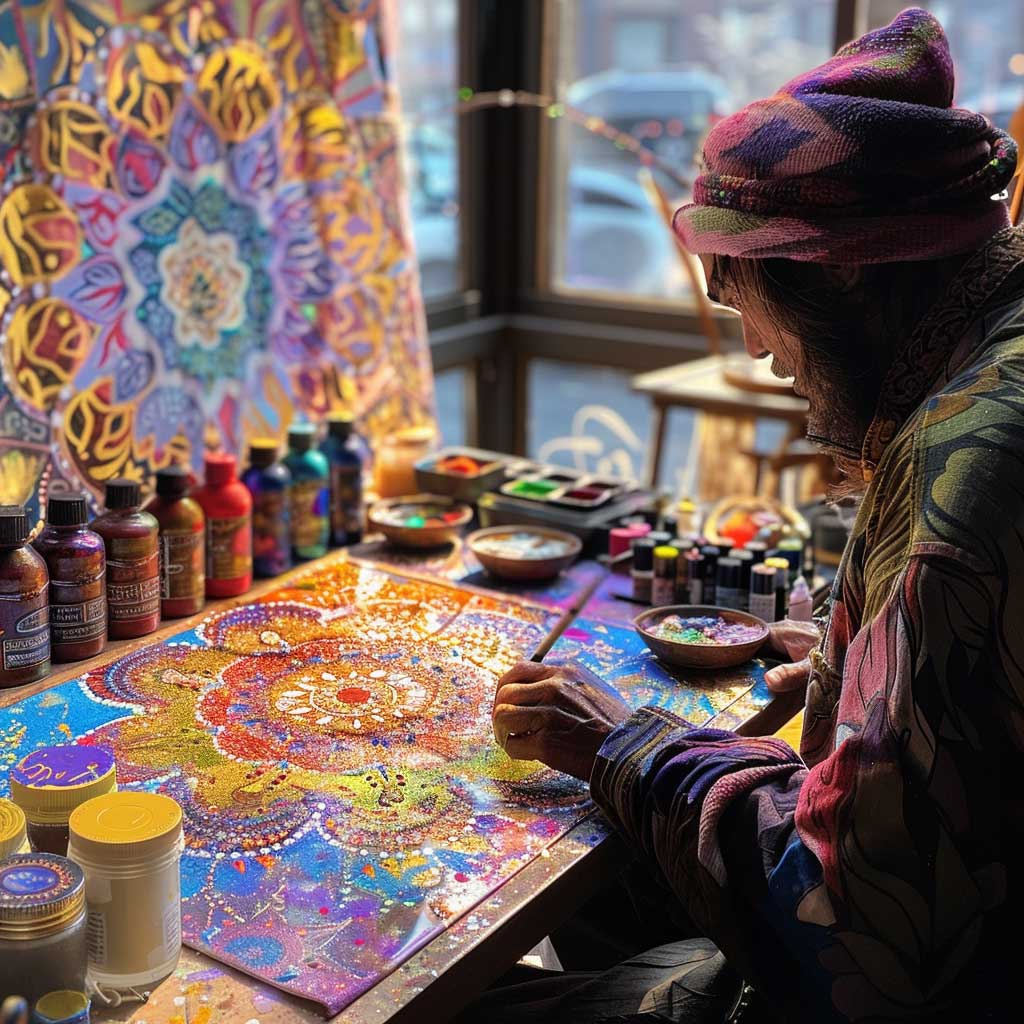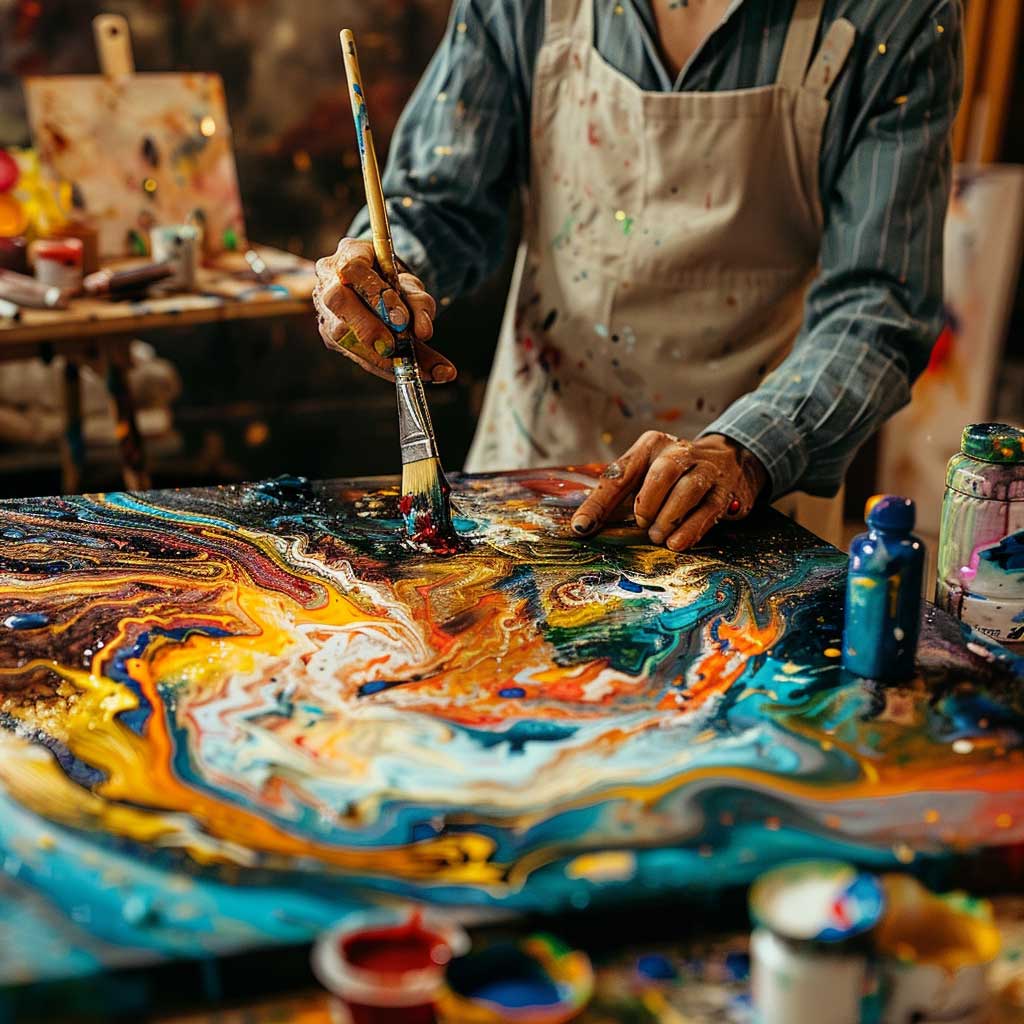Exploring art therapy painting is an incredible way to unlock your creativity while enhancing mental well-being. Whether you’re dealing with stress, anxiety, or simply looking for a relaxing activity, art therapy painting offers numerous benefits. Here, we present three simple exercises to get you started on your journey to self-expression and emotional healing through painting.
Art Therapy Painting Mandala Creation

Mandala creation is a soothing and meditative art therapy painting exercise that helps in centering the mind and fostering a sense of inner peace. Mandalas are circular designs with intricate patterns, symbolizing the universe in Hindu and Buddhist cultures. Creating your own mandala allows you to engage in a mindful practice that promotes relaxation and self-reflection.

Begin by gathering your materials: a blank sheet of paper, a set of paints, brushes, and a compass or circular object to trace. Start by drawing a circle in the center of your paper. This circle will serve as the foundation for your mandala. Inside the circle, begin creating intricate patterns and designs. There are no rules; let your intuition guide you.

As you paint, focus on your breathing and the patterns you are creating. Allow yourself to become absorbed in the process. The repetitive nature of painting a mandala can be incredibly calming, helping to quiet the mind and reduce stress. The use of bright colors can also uplift your mood and stimulate your creativity.

Mandalas can be as simple or as complex as you wish. The key is to enjoy the process and let it bring you a sense of tranquility. By the time you finish, you’ll likely find yourself in a much more relaxed and centered state.
Art Therapy Painting Nature Scenes

Painting nature scenes is another wonderful art therapy painting exercise that connects you with the natural world while providing a therapeutic outlet for emotions. Nature has a soothing effect on the mind, and translating its beauty onto canvas can be incredibly rewarding.

Find a comfortable spot outdoors where you feel relaxed. This could be a park, a garden, or even your backyard. Set up your easel and gather your paints and brushes. Take a moment to observe your surroundings. Notice the colors, shapes, and textures. Choose a scene that speaks to you, whether it’s a tranquil lake, a vibrant flower bed, or a majestic tree.

Begin by sketching the basic outline of your chosen scene. Don’t worry about making it perfect; the goal is to capture the essence of what you see. Once you have your outline, start adding layers of paint. Focus on the colors and how they blend together. Pay attention to the details, like the way the light hits the leaves or the reflections in the water.

As you paint, allow yourself to become fully immersed in the experience. Let go of any judgments about your work. The act of painting and being in nature can help to alleviate anxiety and improve your overall mood. The finished piece will be a personal expression of your connection with the natural world, serving as a reminder of the peace and beauty that surrounds you.
Art Therapy Painting Abstract Emotions
Abstract painting is an excellent way to express emotions without the need for structured forms or detailed subjects. This exercise allows you to channel your feelings directly onto the canvas, using colors and shapes to convey what words might not.

Begin by selecting a large canvas and a variety of paints. Choose colors that resonate with your current emotional state. For example, you might choose bright, warm colors if you’re feeling happy and energetic, or darker, cooler tones if you’re experiencing sadness or stress.

Start by applying broad strokes of color to the canvas. Don’t worry about creating a specific image; instead, focus on how the act of painting feels. Use your brush, or even your hands, to spread the paint, creating textures and layers. Allow your movements to be guided by your emotions.

As you work, you may find that certain shapes or patterns emerge. Embrace these and let them evolve naturally. The goal is to create a visual representation of your inner world. Abstract painting is a highly personal process, and there are no right or wrong ways to do it.

This form of art therapy painting can be particularly cathartic, helping you to process and release pent-up emotions. By the time you finish, you may gain new insights into your feelings and experiences. Your abstract painting will serve as a powerful testament to your emotional journey, capturing a moment in time that is uniquely yours.
Engaging in art therapy painting exercises such as mandala creation, painting nature scenes, and expressing abstract emotions offers a path to self-discovery and emotional well-being. These activities not only enhance your artistic skills but also provide a therapeutic outlet for stress and anxiety. Embrace the process, let your creativity flow, and experience the transformative power of art therapy painting.

